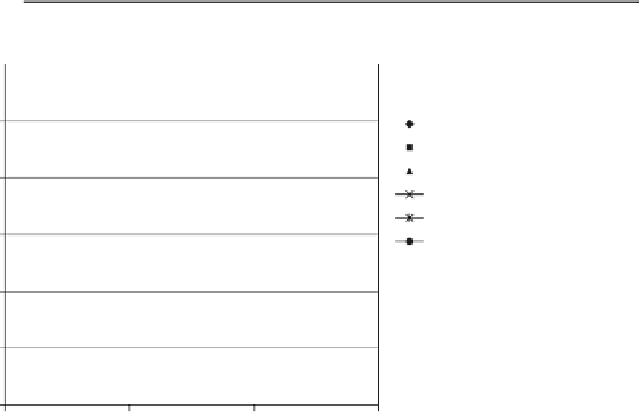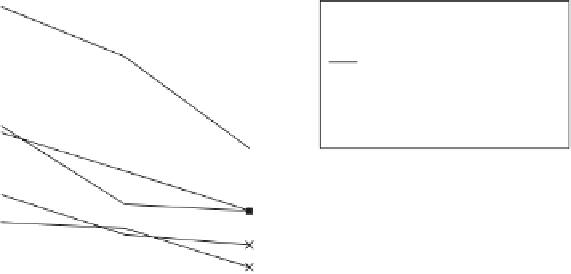Civil Engineering Reference
In-Depth Information
access to safe drinking water and 2.4 billion people lack access to proper
sanitation, nearly all of them in developing countries. At present, a third of
the world's population live in water-stressed countries, and by 2025, this is
expected to rise to two-thirds. Table 16.1 (Gleick, 2000; Hillie
et al.
, 2007a)
shows that water consumption is greatest in irrigated agriculture, account-
ing for 70% of global water withdrawals in 2000, while the respective shares
of industrial and domestic usage were 20% and 10%. Agricultural use
dominated globally (70%) and in developing countries (88%). Meanwhile,
the share of industrial and domestic use has increased with rising country
incomes, while agricultural use has declined.
Figure 16.1 shows the percentage of the population without access to
reliable water sources, by region, and the predicted values for 2015 (World
Table 16.1
Relative water withdrawals by sector in 2000 (adapted from
Gleick, 2000)
Water consumption as share of total use
Country group
Domestic
Agriculture
Industry
Low income
6%
88%
5%
Middle income
10%
70%
20%
High income
15%
41%
44%
World
10%
70%
20%
60
50
Sub-Saharan Africa
South Asia
East Asia and Paciic
Latin America and Carribean
Middle East and North Africa
Europe and Central Asia
40
30
20
10
0
1990
2000
2015
Year
16.1
Population without access to reliable water sources (actual
values 1990, 2000; estimated 2015). Source: World Bank (2005).












Search WWH ::

Custom Search